Their car fell 300 feet into a canyon. A new iPhone satellite SOS system likely saved them
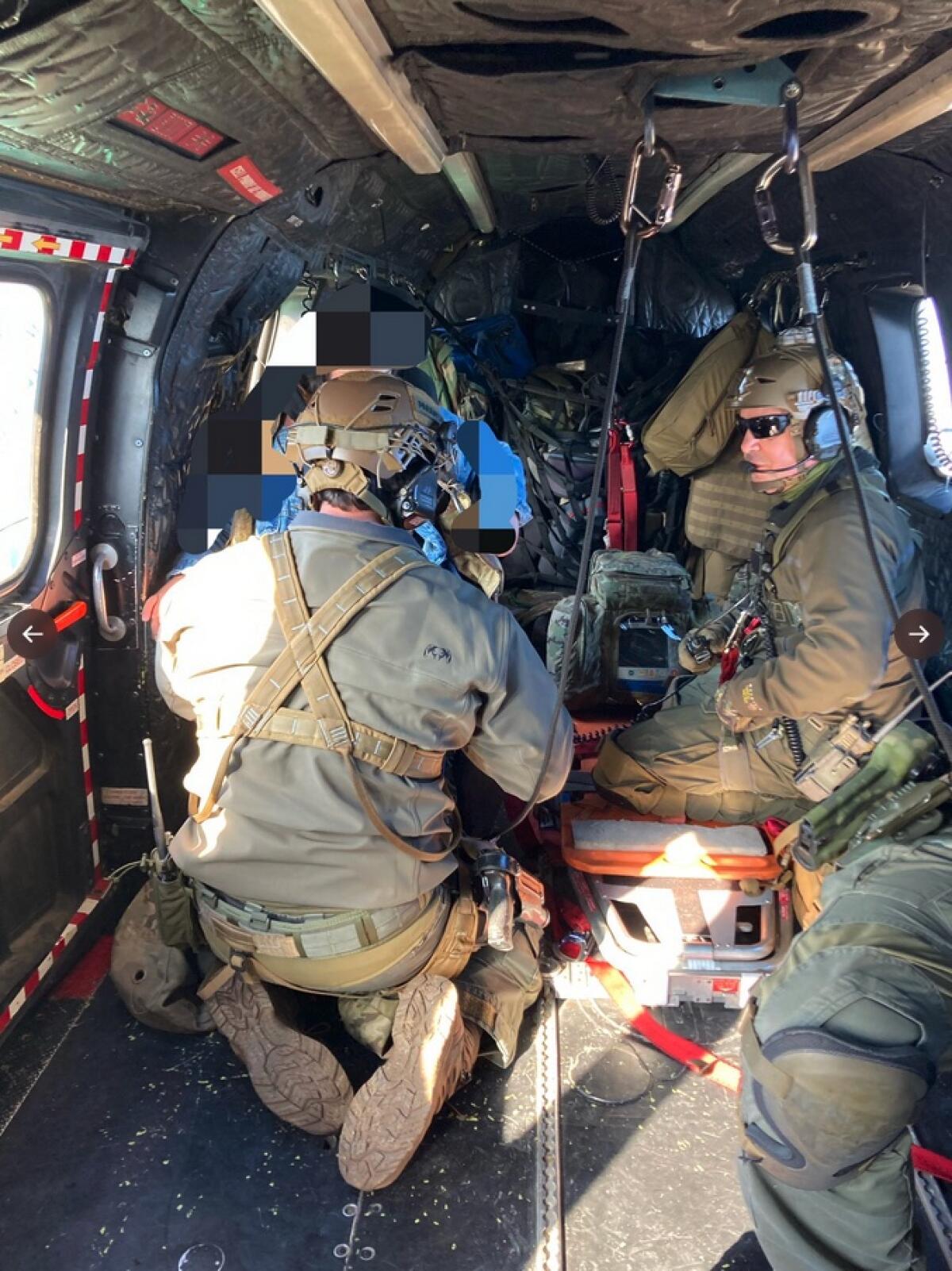
- Share via
A couple whose car fell into a rocky canyon in the Angeles National Forest survived not just with a lot of luck, rescuers said, but likely also thanks to a new iPhone feature that immediately alerted first responders to the crash.
Their vehicle fell about 300 feet off a treacherous section of the Angeles Forest Highway where there is no cell service. It’s a spot where Sgt. John Gilbert, of the Los Angeles County Sheriff’s Department’s Montrose Search and Rescue Team, said he remembers his team responding only to fatal crashes.
“Not only is it a big fall distance-wise, but that particular canyon is extremely steep,” Gilbert said. He called it a “miracle in itself” that the couple survived — and then were also able to communicate for help.
Luckily for the couple, Cloe Fields said she had recently switched her phone’s service provider and got an upgrade to the iPhone 14, which she was thankful to learn came equipped with a new emergency SOS system that uses crash detection and satellite technology.
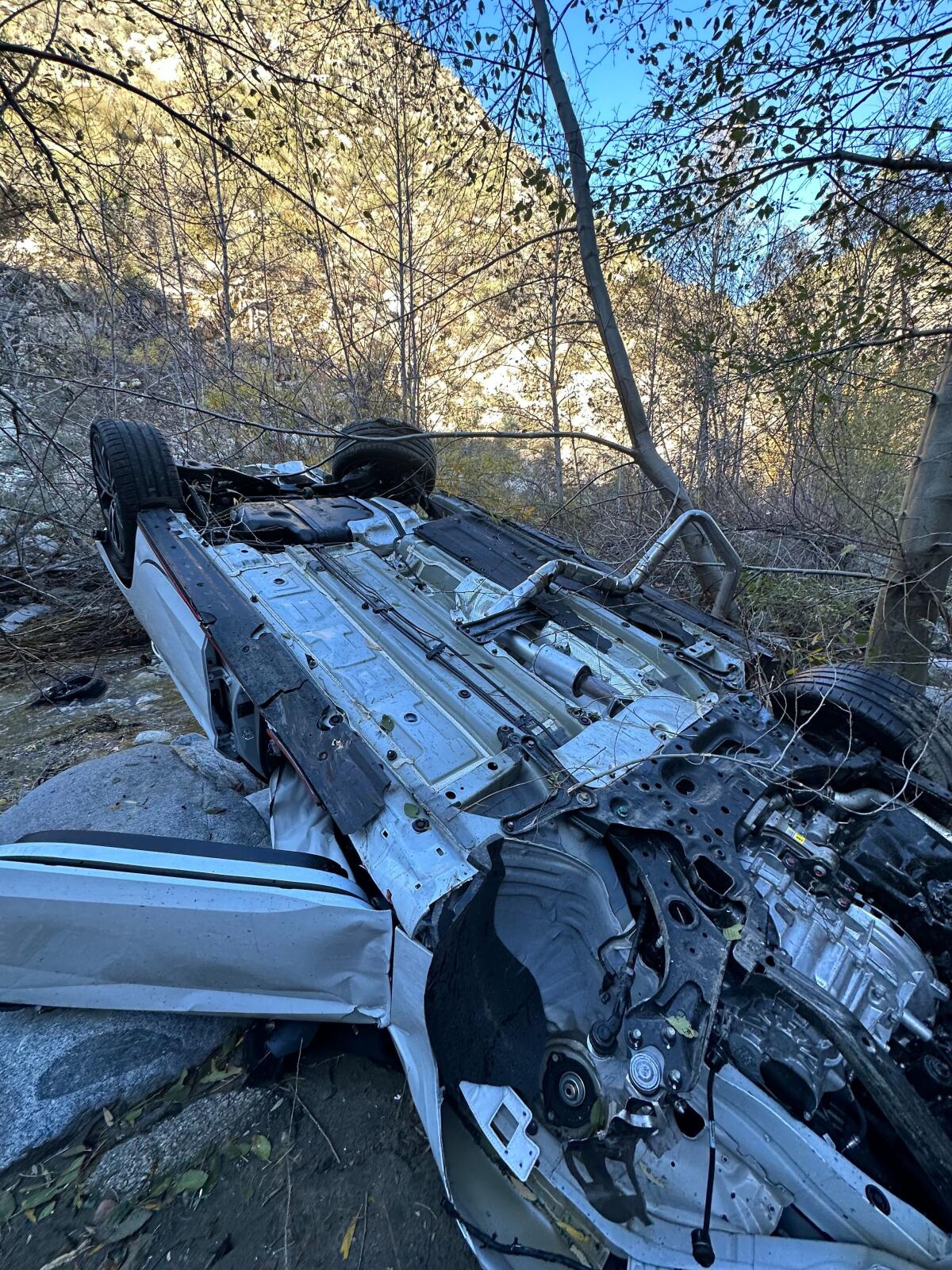
Even before she and her boyfriend tried to call 911, which probably wouldn’t have been possible from their location, her phone had alerted local emergency responders of their crash and location.
“I didn’t know this was a feature on the iPhone,” Fields, 23, said. Once her boyfriend, Christian Zelada, found her shattered but still functioning phone on the side of the canyon, she said, they used the emergency messaging via satellite to communicate more details about their injuries and the crash.
Apple operates relay centers with trained emergency specialists who communicate with people in crisis through the new satellite system, then send along the information to local emergency personnel, the company said.
Within about 30 minutes, Fields said, they were being rescued.
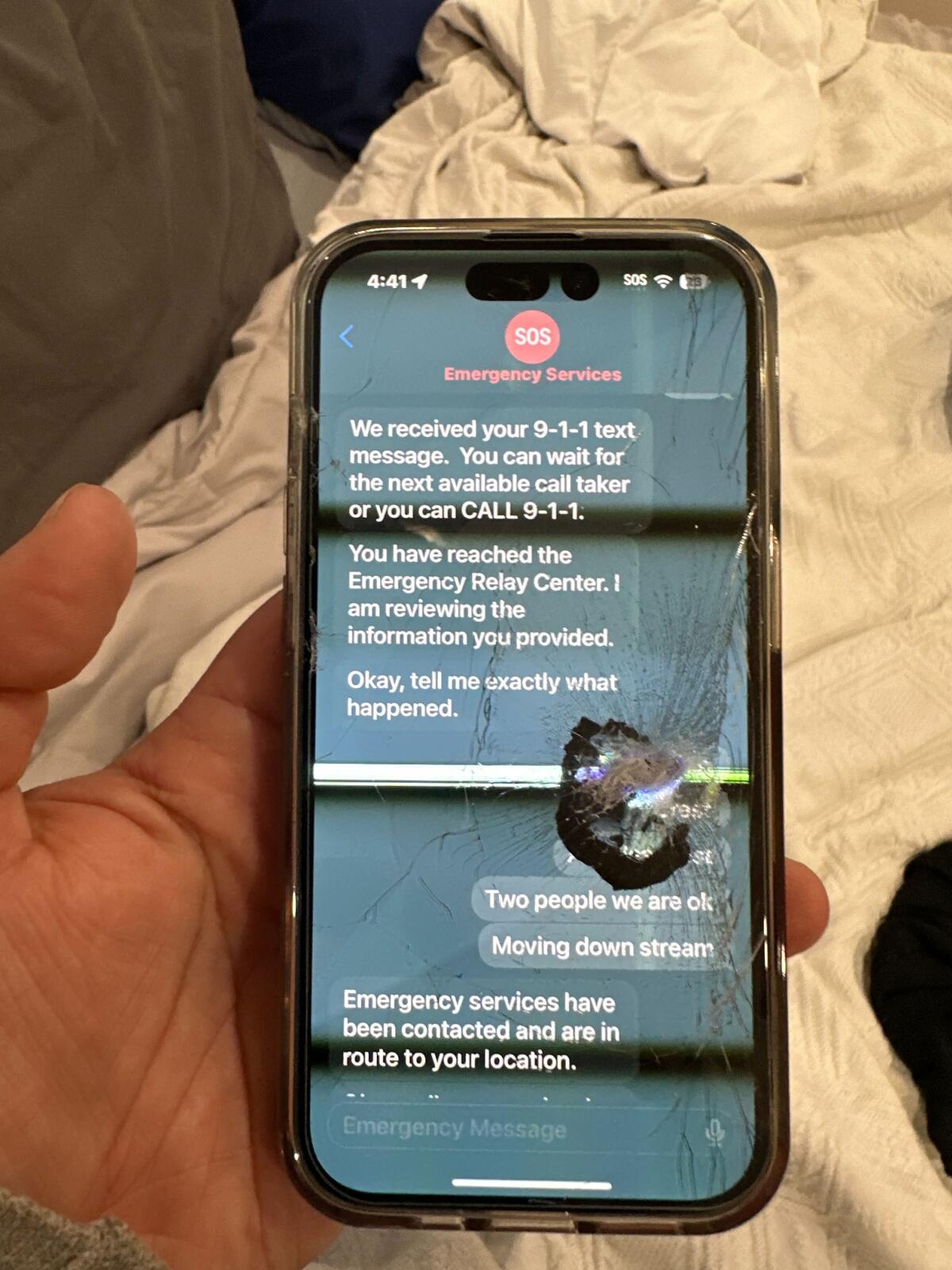
“Without any of that [technology], we wouldn’t have been alerted to the fact that they had gone over the side of the mountain, and nobody would have known to look for them,” Gilbert said. Even though the pair survived with relatively mild injuries, “they would have had the secondary problem of how do we get out of this canyon before nightfall, when you start to have hypothermia issues.”
He said it was about 45 degrees during the day and would have quickly fallen into the low 30s once the sun set.
Fields said she and Zelada had gone for a scenic drive Tuesday afternoon in their Hyundai Elantra. On their way home to Glendale, a vehicle began tailgating them and honked, so Zelada tried to pull over at a spot to let the car pass. But their car hit some loose gravel, she said, and Zelada lost control.
“The car lost traction,” Fields said. “The back of the car did a whole 180 on us, and next thing you know we’re falling backwards down the mountain.”
Fields said she remembers hitting at least two large trees and then rolling, until they landed upside down near a stream at the bottom of the canyon. When they undid their seat belts and got out, she said, they were surprised to find they both were largely OK.
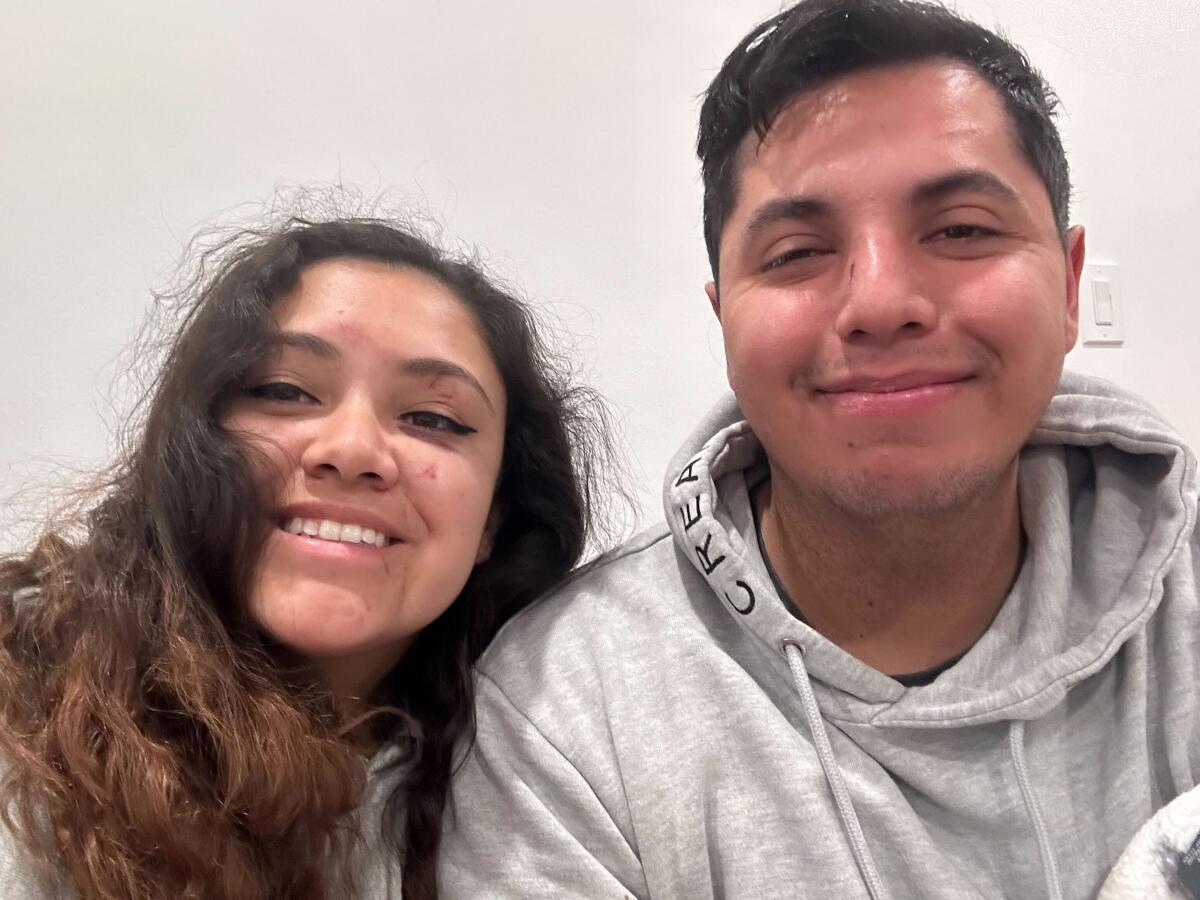
Zelada then found Fields’ phone, which had already signaled for help.
Rescuers converged on Monkey Canyon near mile marker 18 on the Angeles Forest Highway about 1:30 p.m. Tuesday, Gilbert said, after receiving the location information from Apple’s emergency satellite system.
“That information allowed us to get the rescue helicopter,” Gilbert said. He said the satellite information from the iPhone provided the latitude and longitude of the crash, and the rescue helicopter was able to quickly spot the vehicle and couple.
He said the crashed vehicle was not visible from the roadway.
Fields said they were both airlifted to a hospital, and after many tests, doctors confirmed their initial evaluation — neither had major injuries. Both have some minor cuts and bruising and sore necks, likely from the impact, but are feeling relatively fine, she said.
“We’re kind of shocked on everything and how we feel after all of that,” Fields said. “But we walked away all in one piece, we feel extremely grateful.”
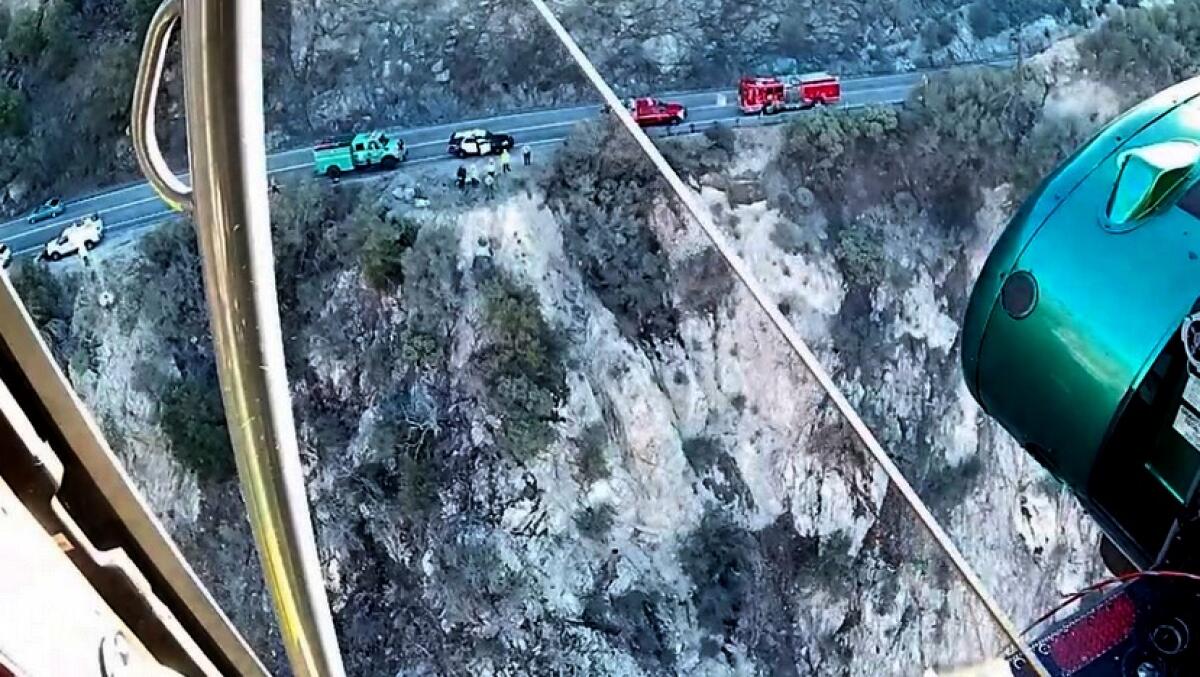
“Their technology in this case was extremely useful,” Gilbert said. “This is the first time we’ve gotten one of these alerts in which a rescue [occurred].” He said he remembered one other time an iPhone user utilized the satellite emergency system after becoming lost.
The Emergency SOS service via satellite is free for two years after the activation of iPhone 14 or iPhone 14 Pro, according to Apple, made possible through a partnership with Globalstar.
Fields set up a GoFundMe for the couple, which she said will help them deal with bills from their rescue and hospital visit.
More to Read
Sign up for Essential California
The most important California stories and recommendations in your inbox every morning.
You may occasionally receive promotional content from the Los Angeles Times.











